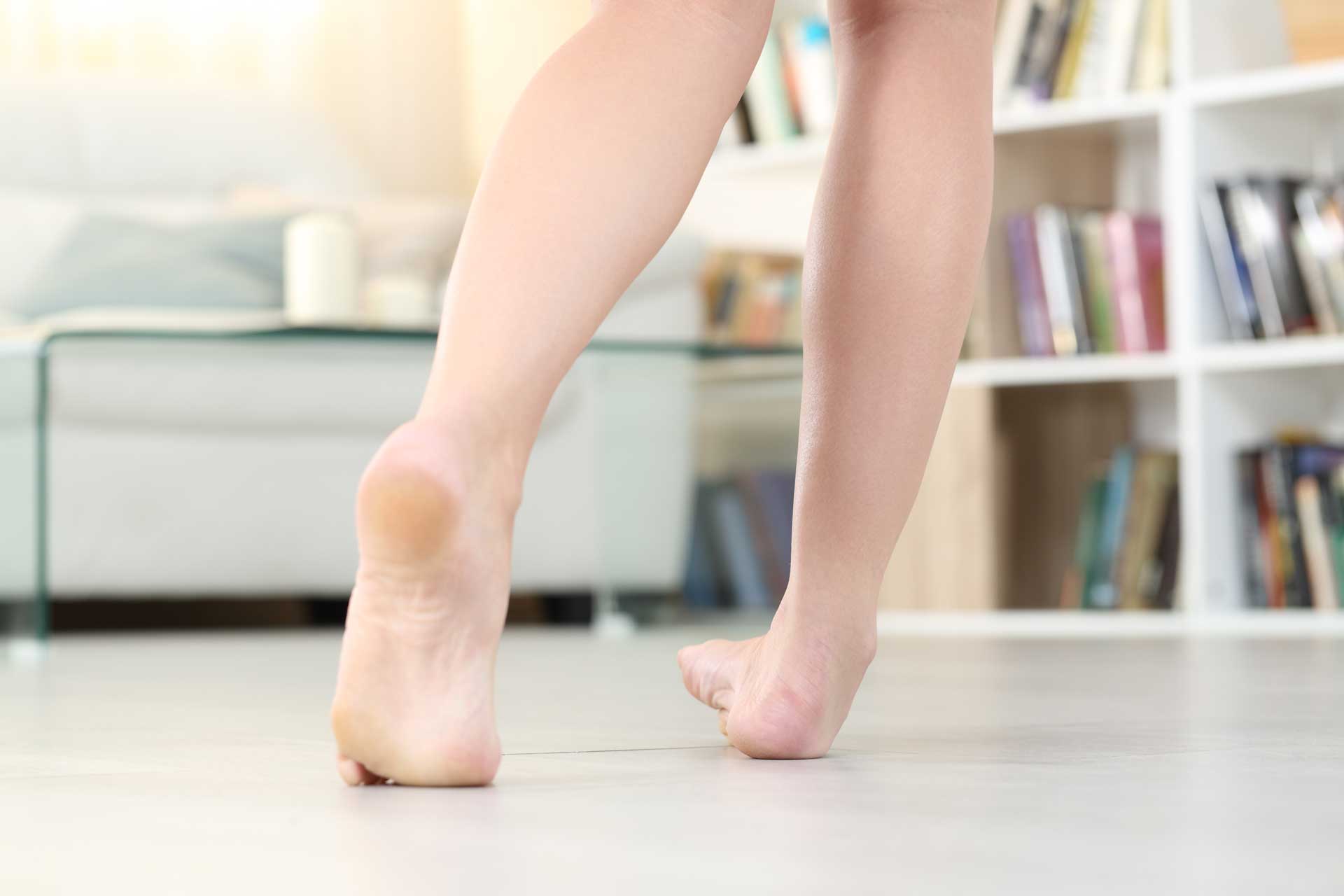Summarize This Article:
Summarize This Article:

If you’ve ever known someone who could not lift the front part of their foot, that person likely had a condition known as foot drop, a condition that occurs when the muscles that control the ankle and foot are weakened or paralyzed, often due to nerve damage or neurological disorders.
The impact of foot drop on a person's life can vary. It can be a mild nuisance or it can significantly impact your quality of life due to impaired ability to walk,run, and navigate stairs. Patients with foot drop are also more prone to falls. Individuals with foot drop may even need assistive devices like ankle-foot orthoses (AFOs) or canes to improve their mobility and stability and complete daily tasks, and in some cases surgery to improve or correct the foot drop may be appropriate.
According to Dr. Michael Rose, a leading expert in foot drop reconstruction surgery at The Institute for Advanced Reconstruction, at-home foot strengthening exercises can be helpful for those suffering from mild to moderate foot drop to help:
Maintain muscle strength and function: The weakened muscles that control foot and ankle movement must be exercised to prevent further deterioration. Without consistent exercise, these muscles will continue to weaken, exacerbating foot drop symptoms.
Improve range of motion: Exercises that target ankle and foot mobility help maintain flexibility and range of motion. This is crucial, as foot drop can lead to muscle contractures and joint stiffness over time if left unchecked.
Enhance neurological connections: Many causes of foot drop involve nerve damage. Targeted exercises for foot drop can help re-establish the neurological pathways and connections between the brain, nerves, and muscles.
Supplement clinical treatment: At-home foot drop exercises complement any clinical interventions, such as physical therapy, bracing, or even surgery.
On the contrary, if an individual does not incorporate at-home exercises, an individual may be at-risk for:
By including foot and ankle exercises into a daily routine, individuals with foot drop can help maintain function, prevent complications, and improve their overall well-being for lower extremities. Consistency is key, however, as these exercises need to be performed regularly to be effective.
“It’s also important to note that in cases of severe foot drop, oftentimes stretching or exercising the area may not have any impact,” advises Dr. Rose. “In those instances, foot drop surgery may be recommended to help better manage your condition.”
If you or someone you know is struggling with mild to moderate foot drop, The Institute for Advanced Reconstruction recommends the following eight effective at-home exercises to help manage foot drop symptoms easily and comfortably. The critical thing to remember is that one should repeat each of these exercises for foot drop 10-15 times, multiple times per day, for maximum benefit and treatment for foot drop.








Consistently performing these foot exercises 2-3 times daily can help improve foot and ankle strength, flexibility, and control, which are essential for managing foot drop symptoms.
“In cases of severe foot drop, where the condition results from nerve damage or compression, surgery may be recommended to provide relief for patients,” shares Dr. Rose.
At The Institute for Advanced Reconstruction, our care team specializes in in nerve reconstruction surgery that puts patients at the forefront of their care, with procedures including:
“We deploy cutting-edge surgical techniques to help restore full function and mobility to our patients’ feet,” adds Dr. Rose.
Our advanced surgical care centers are committed to customized treatment plans to improve patient experience. As proven innovators in the field of plastic and reconstructive surgery, we collaborate with top physicians and clinic partners to ensure patients receive comprehensive care.
If you or a loved one are seeking nerve surgery to improve foot drop, contact Dr. Rose or the team at The Institute for Advanced Reconstruction at 855-980-6981.
Schedule an online consultation with our team here.

